During the Victorian Era, advances in technology and distribution saw fashion change from an exclusive privilege of the wealthy elites to something that could be enjoyed by ordinary people.
The Industrial Revolution inspired a flowering of creativity in architecture, literature, and decorative and visual arts, all playing a part in influencing the latest fashions.
Changing attitudes to traditional gender roles and the rising middle class meant that by the late Victorian Era, a new age of mass consumerism had begun.
Unlike earlier centuries, when it was commonplace for women to help with the family business, Victorians thought a woman’s place was in the home.
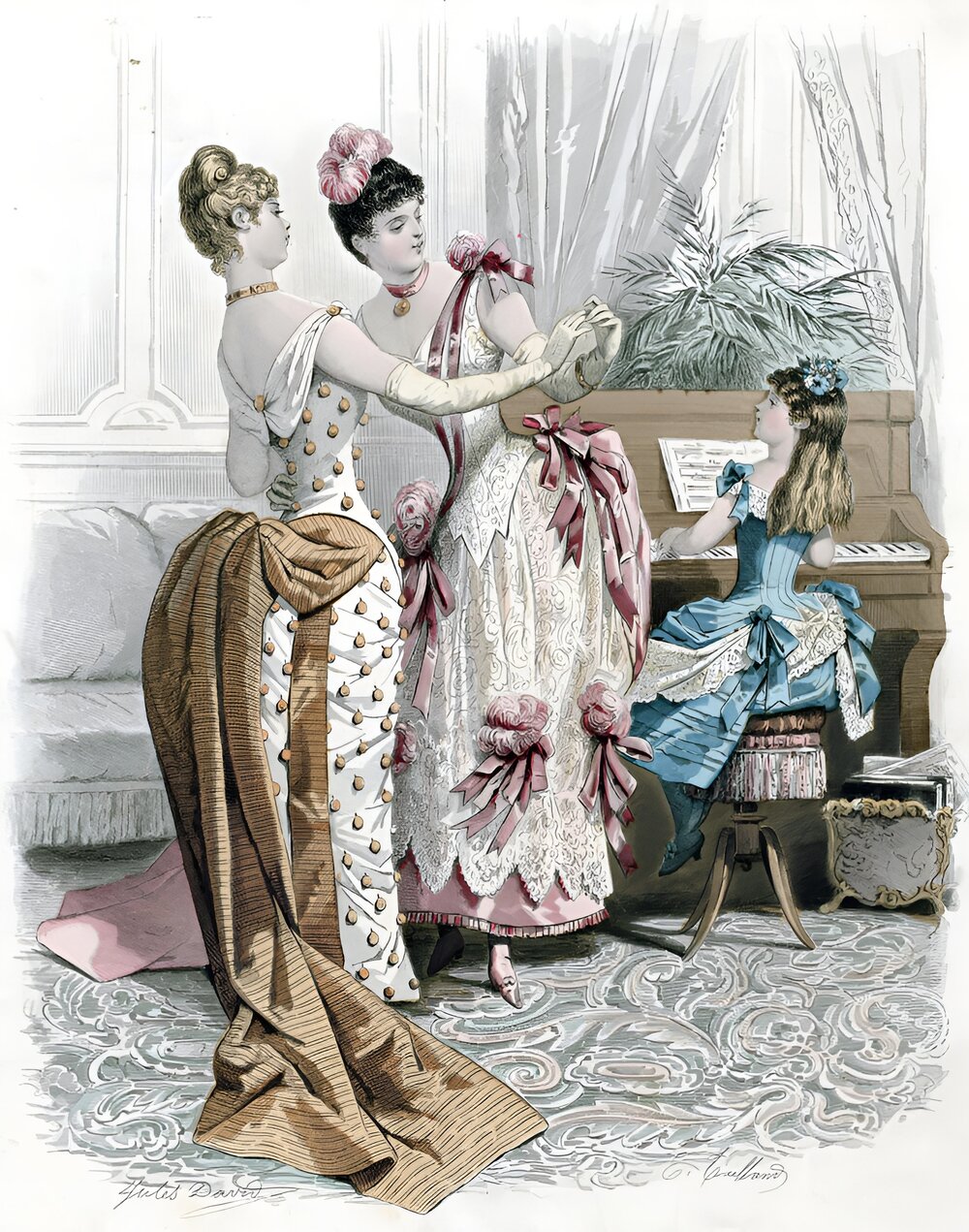
Victorian fashion wasn’t utilitarian, it was an expression of position in society.

The upper class wore clothes adorned with embroideries and trims; the middle class, less extravagant; and the working class, whatever they could afford.
Depicted in this painting is a middle-class woman showing off her newly purchased bonnet at her sister’s modest home.

Casting off the shackles of crinolines of the 1850s and 1860s, the late Victorian era saw several innovations to bring more practicality and mobility to fashion whilst maintaining the volume of fabric.
Introduced in the late 1860s, the bustle was a framework used to expand and support the fullness of a woman’s dress at the back, leaving the front and sides flatter for ease of movement.
Reaching its greatest extension by the mid-1880s, it was popularly boasted that the cantilevers of bustles could support an entire tea service.
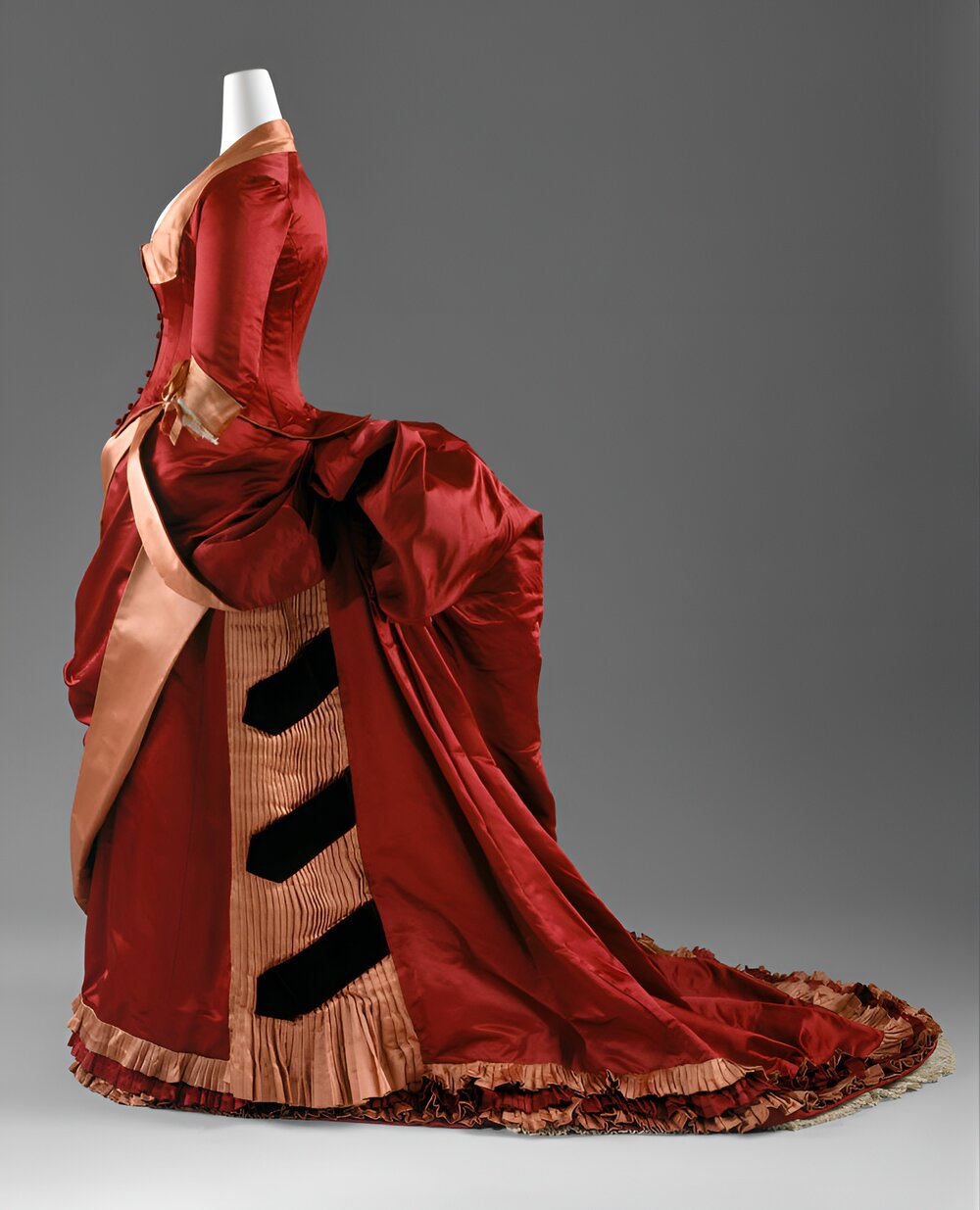
With women becoming more involved in activities outside the home, fashion designers made changes to suit.
Skirts were given more ground clearance and trains were made simpler, stronger and dragged less on the ground while keeping the same overall form.

Abandoned by the 1890s, the bustle evolved into skirts with a much more subtle flow from the wearer’s thin corsetted waist.
Necklines were high, while sleeve size increased.

Becoming bell-shaped, dresses were made to fit tighter around the hip area.
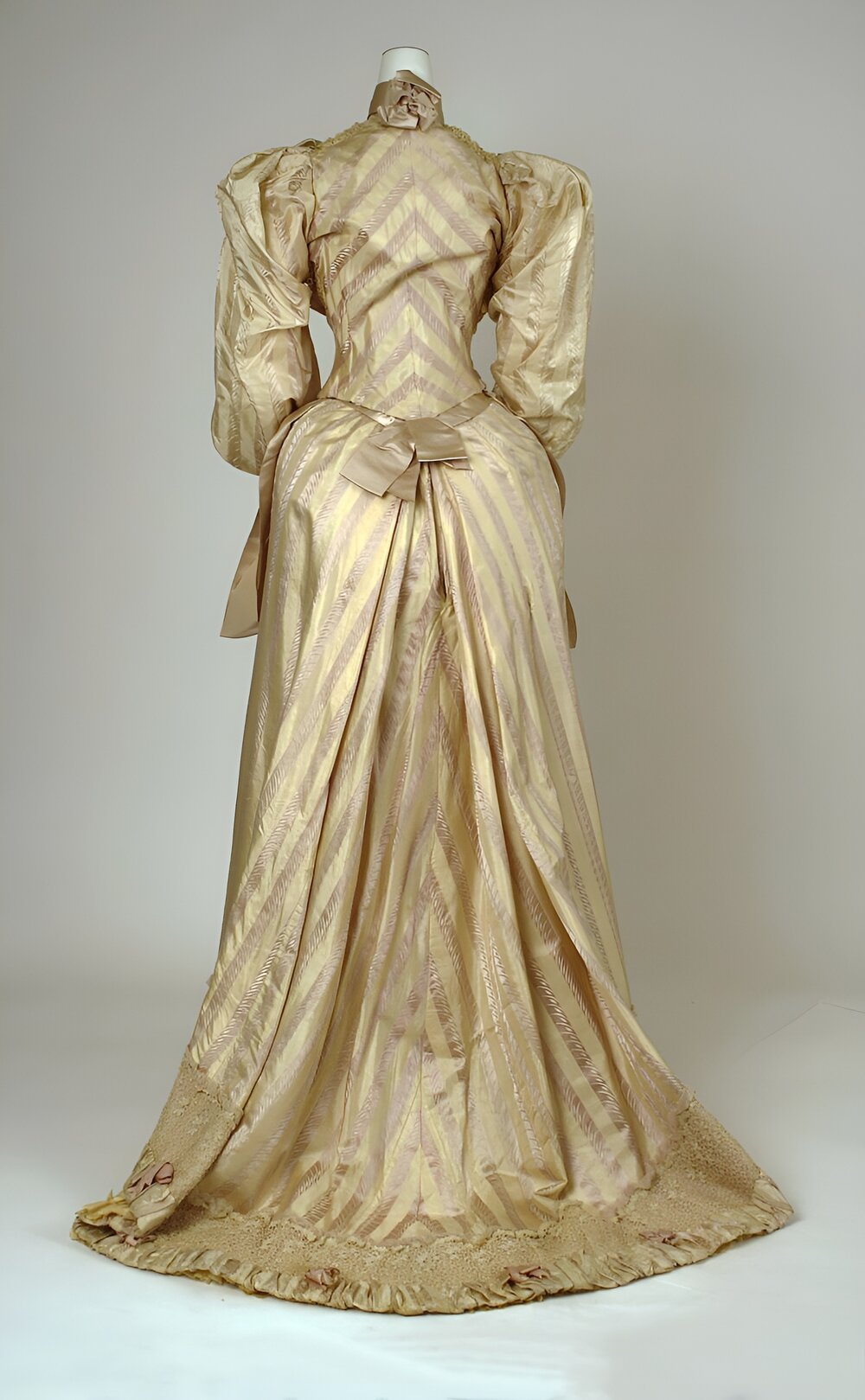
While sleeves and bodices initially peaked at the shoulders, size would increase considerably.
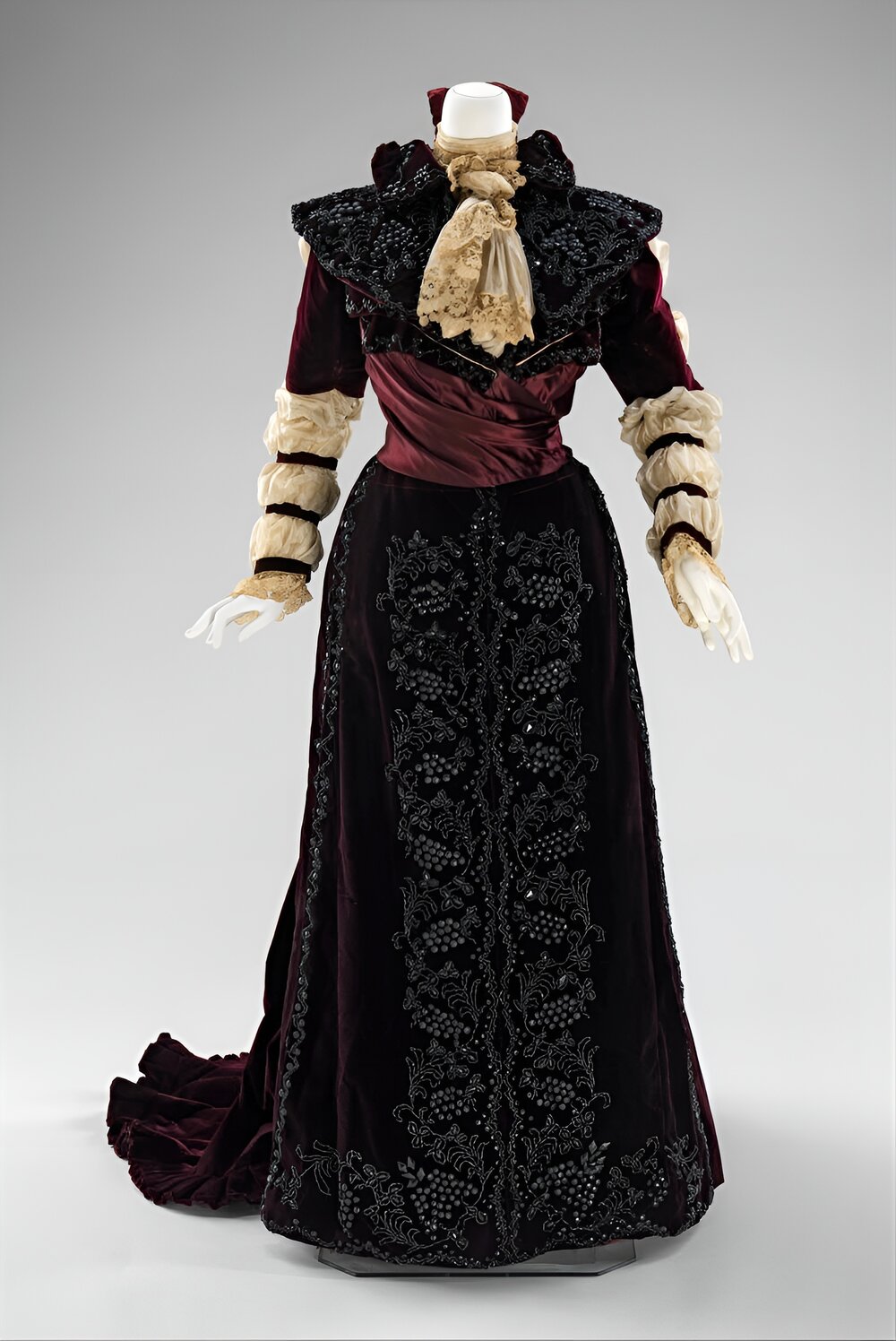
Beginning in the mid-1890s, exaggerated “leg o’mutton” sleeves grew in size until disappearing in about 1906.

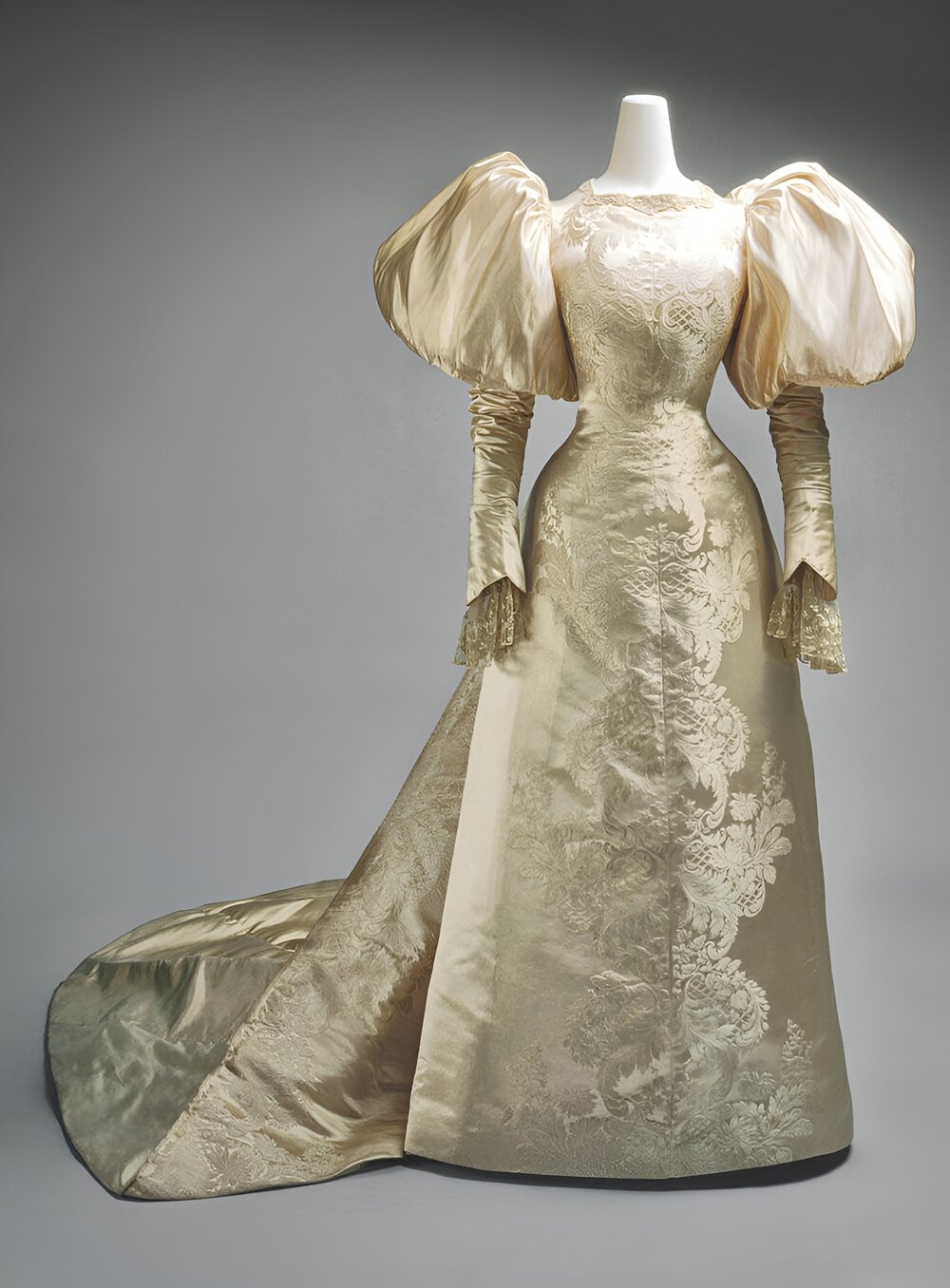

Skirts started to take on a graceful, curved, “A-line silhouette”.


A glittering extravaganza, the neoclassical motifs in the below dress add a texture and lighting effect to stand out at a formal ball.

Changing attitudes about acceptable activities for women also made sportswear popular, particularly for bicycling and tennis.

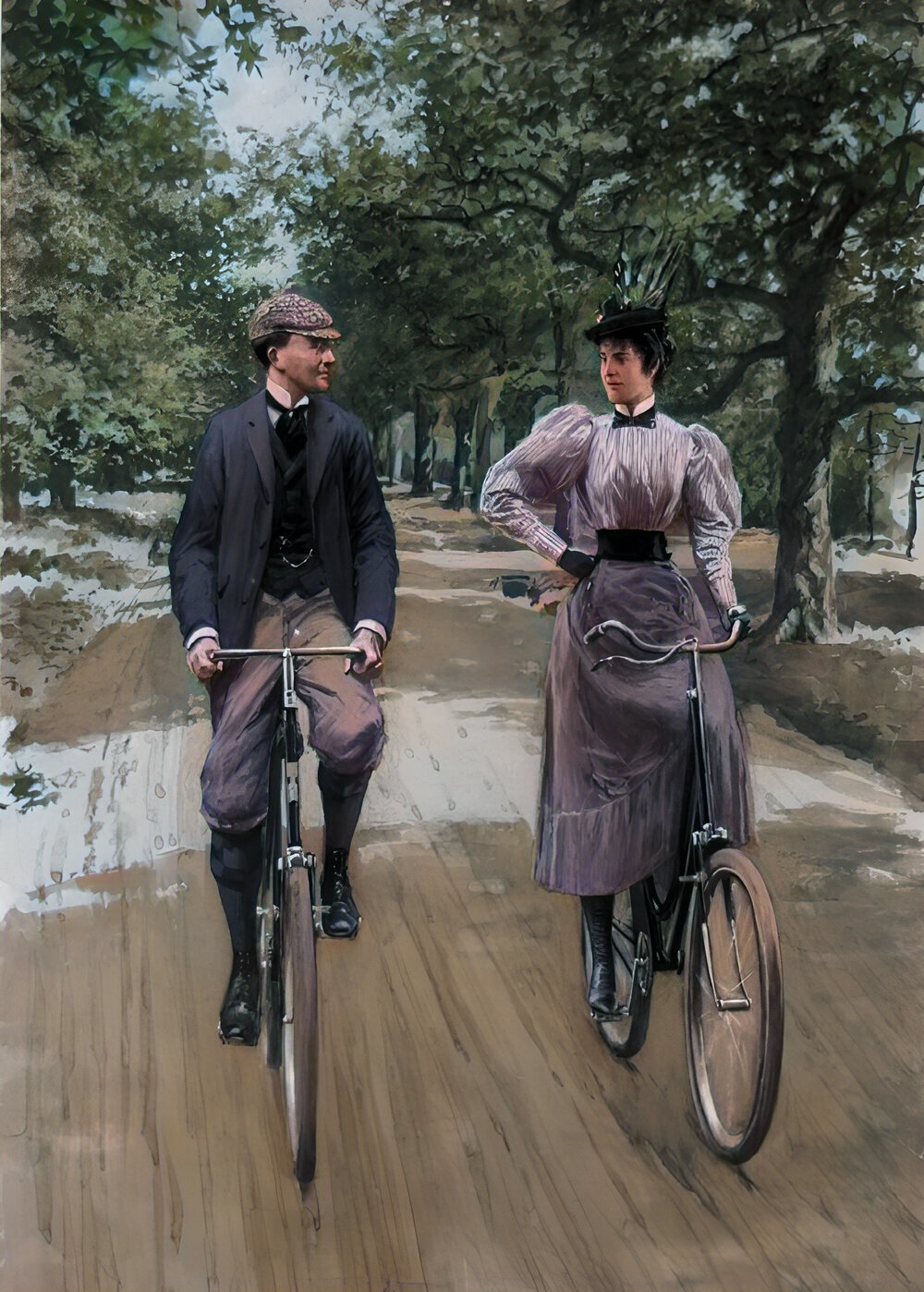
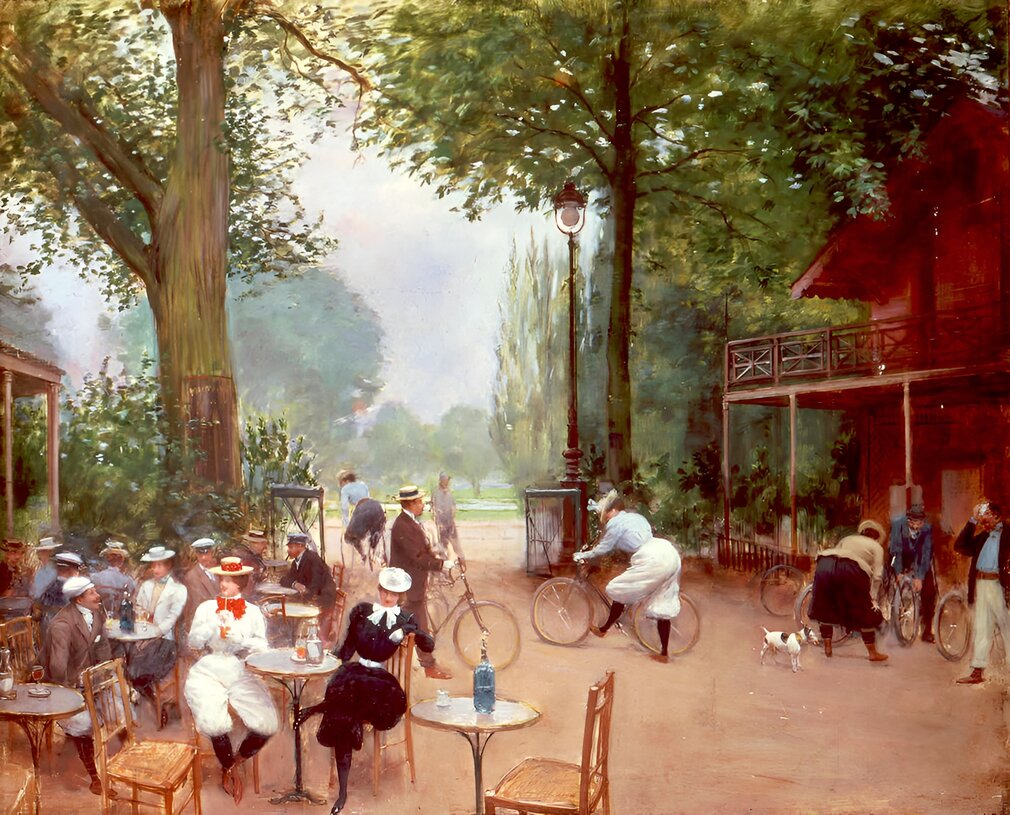
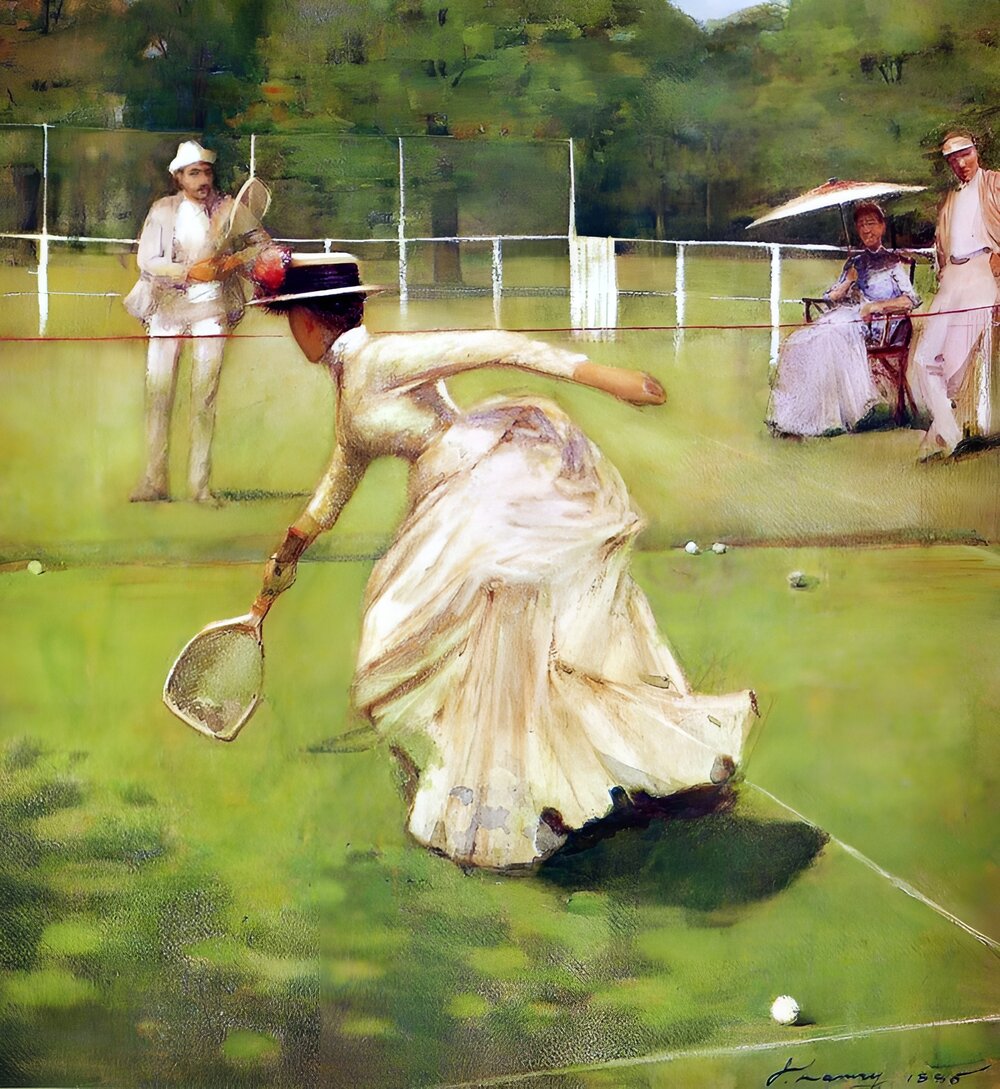
Although introduced much earlier, the riding habit became more practical, with a much simpler, more formal appearance.
Void of embellishments, it was made of tough woolen fabric in a single dark colour and worn with matching hat and veil.
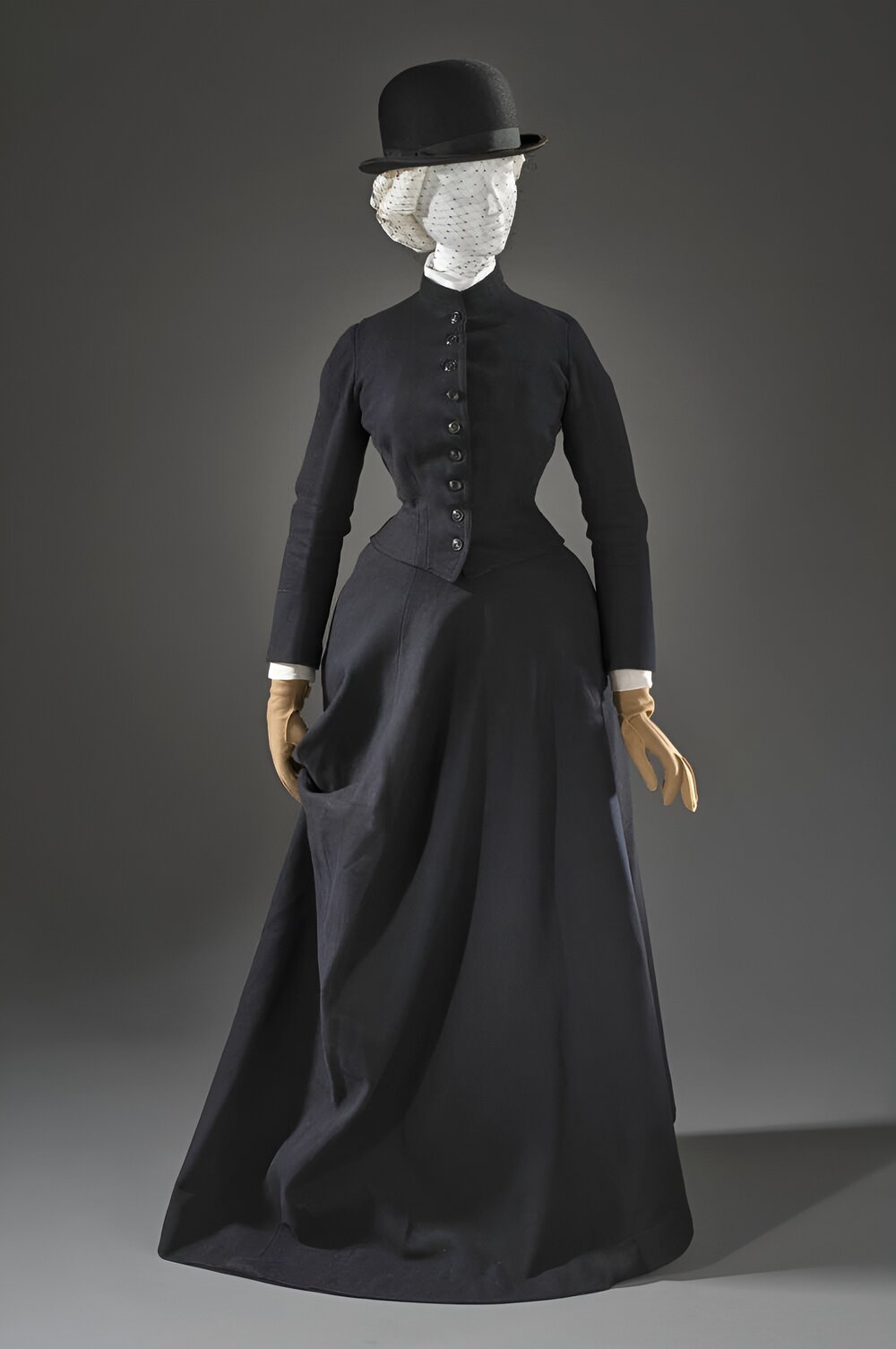

Crucial to a respectable appearance were hats and gloves—to be seen bareheaded was simply improper.

Dozens of fanciful designs provided women with almost endless choice.
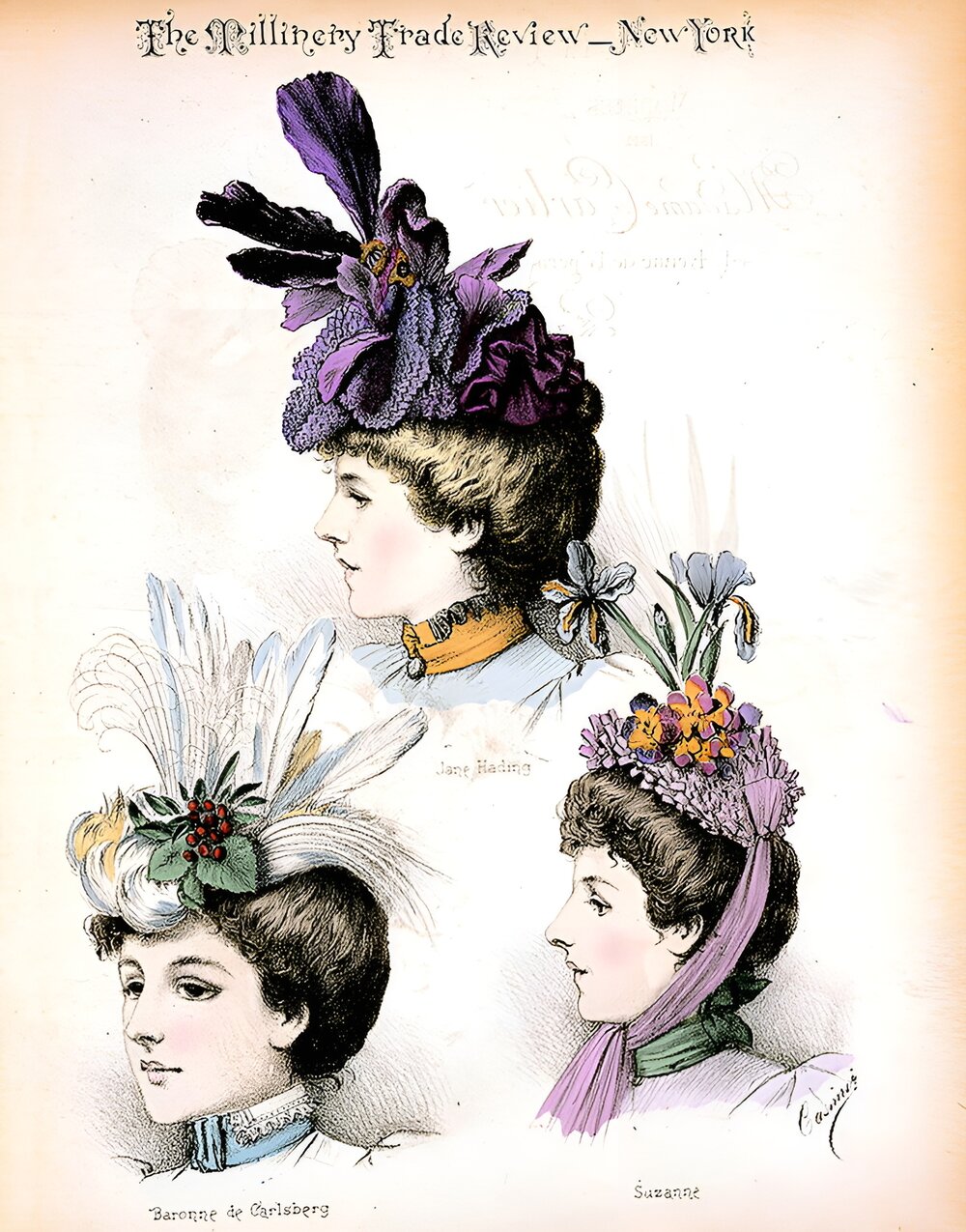
Women who wanted a more modest appearance often preferred bonnets but they became associated with a matronly appearance.

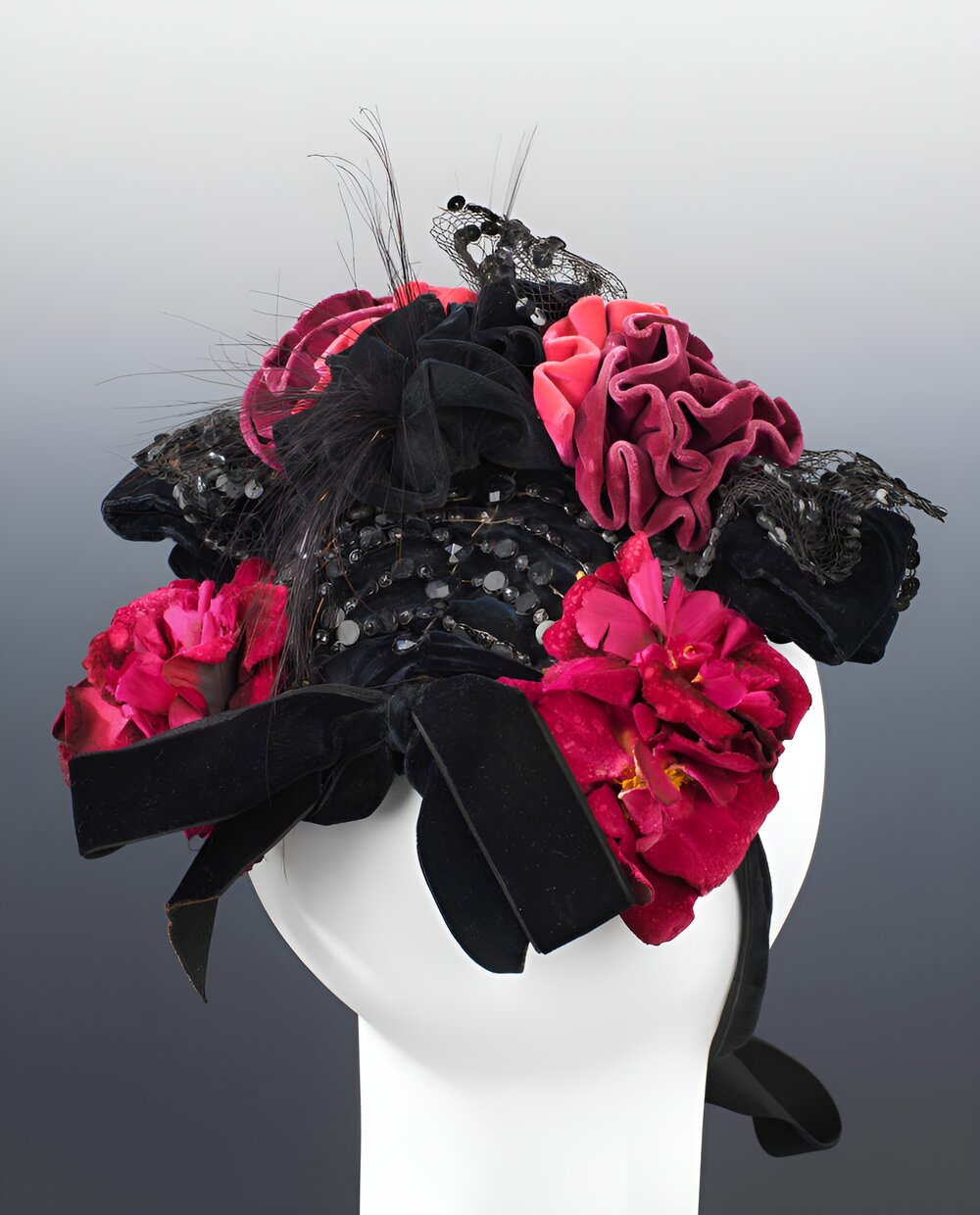
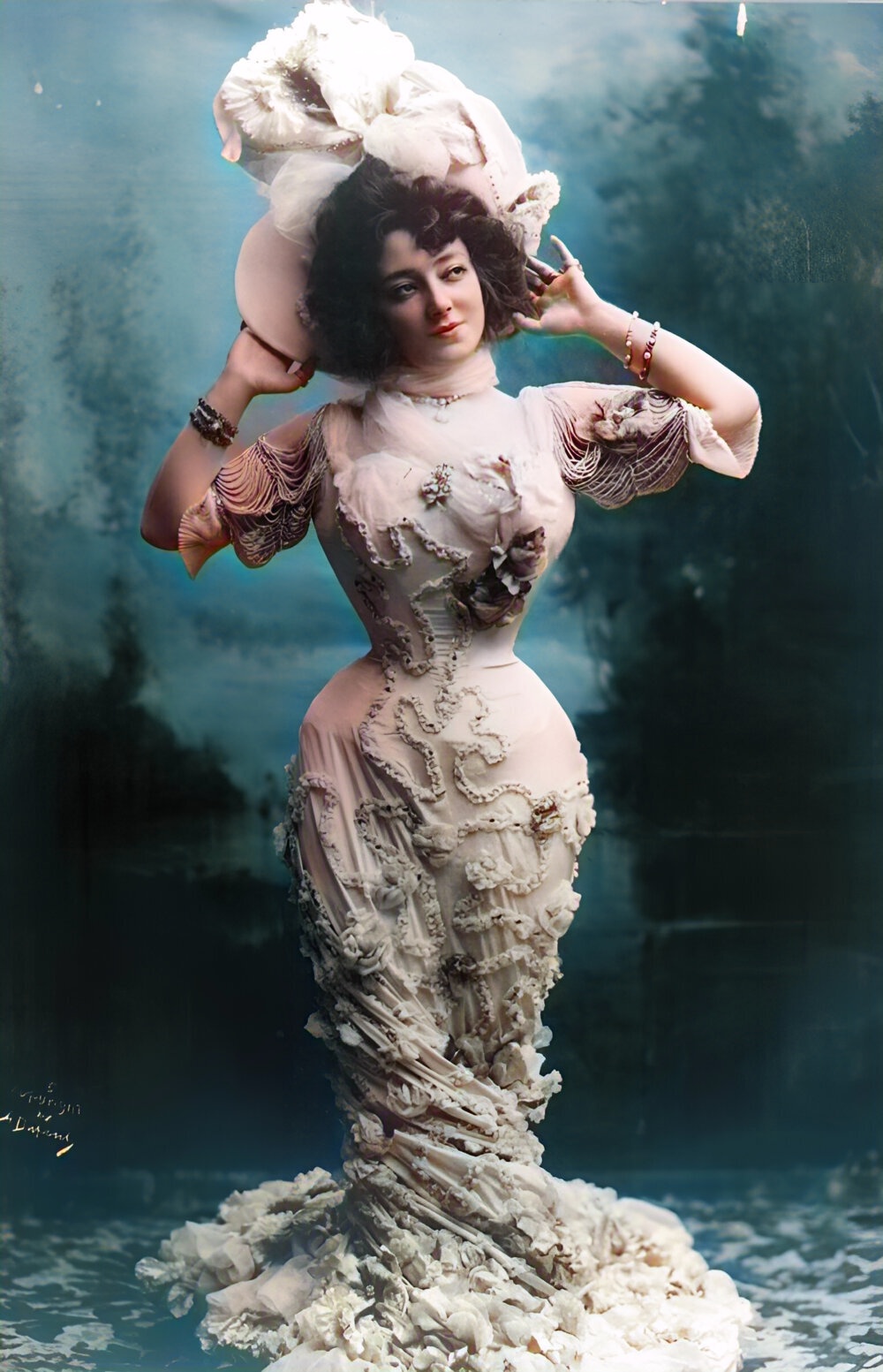
Straw hats were essential summer wear for outdoor activities like croquet.


The widening of hats towards the end of the 19th century hinted at the enormous hats that were to follow during the Edwardian era.

The late 1890s returned to the tighter sleeves often with small puffs or ruffles capping the shoulder but fitted to the wrist.
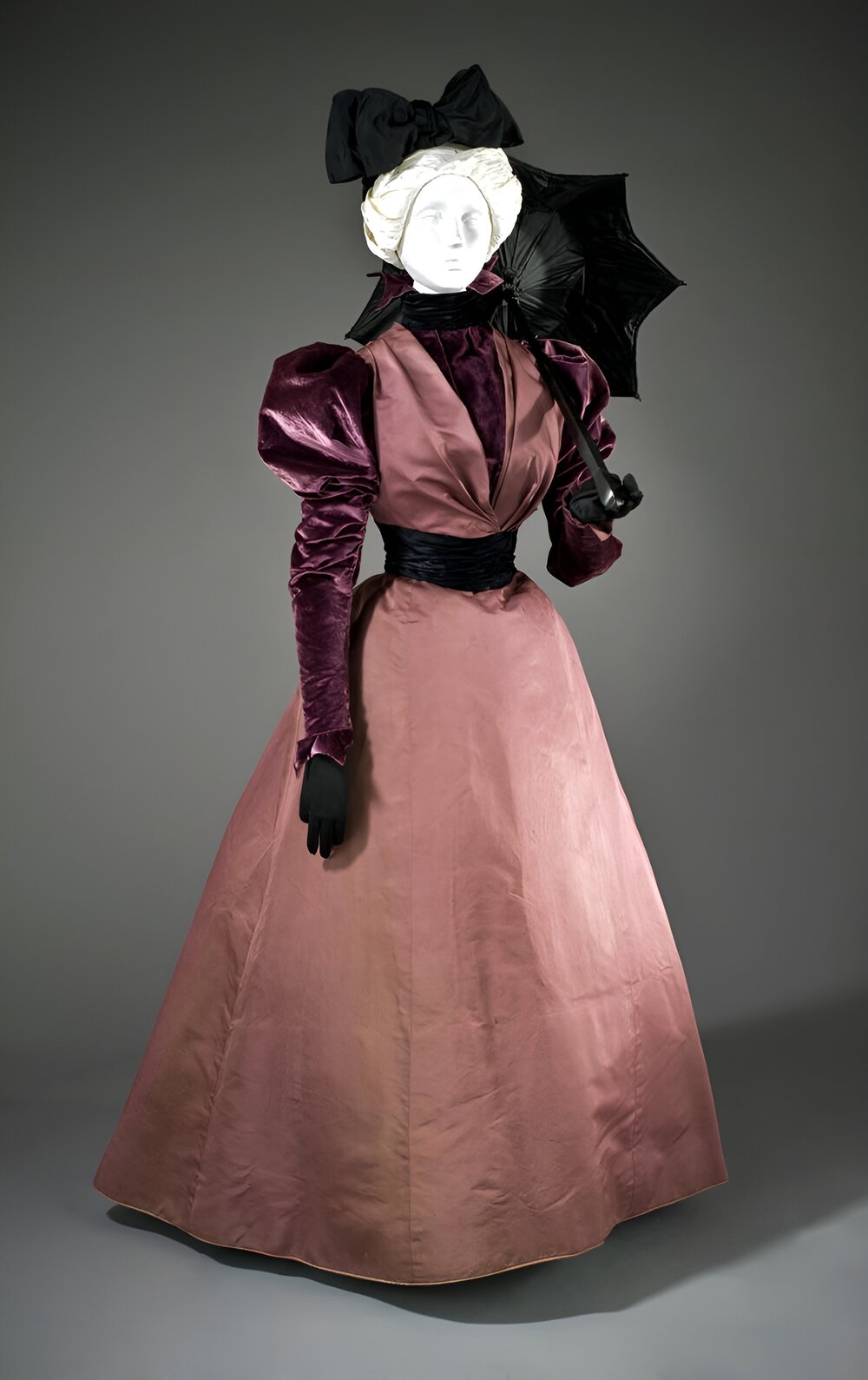
Indispensable accessories for the Victorian lady, parasols of the late Victorian era were exuberant and lace-covered with extremely fine handle detail.
Here, the bright colours indicative of the French touch on the left contrast with the black parasol for mourning.
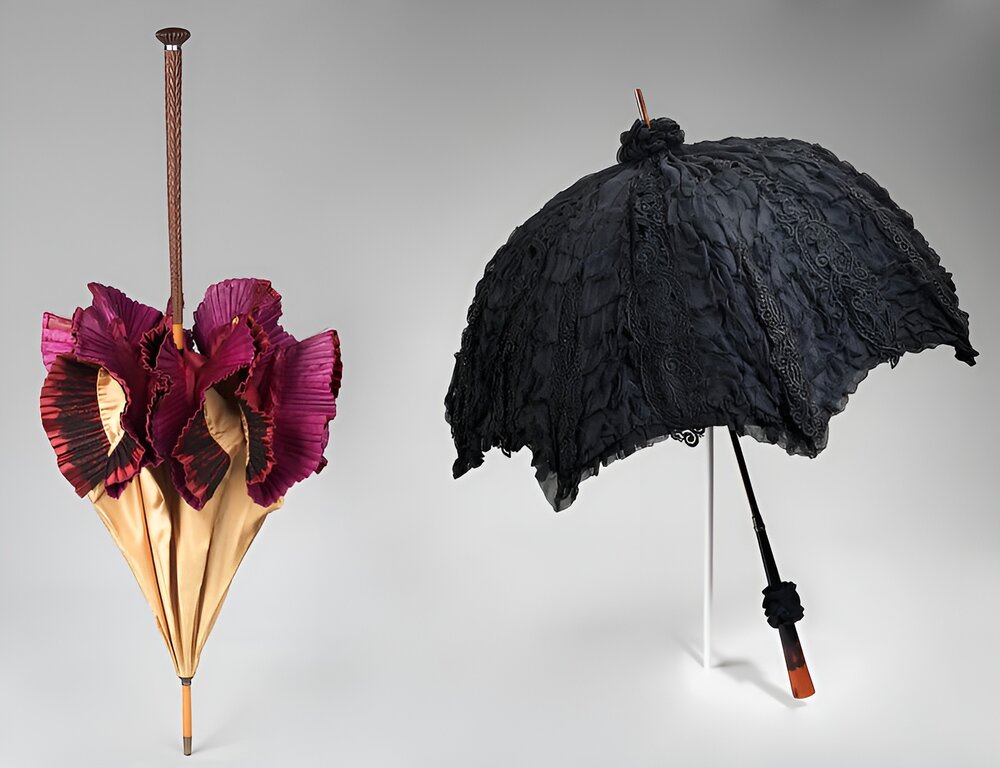
From the 1870s to the twentieth century, women’s shoes changed to include higher heels and more pointed toes.
Low-cut pumps were worn for the evening.
Ankle-length laced or buttoned boots were also popular.

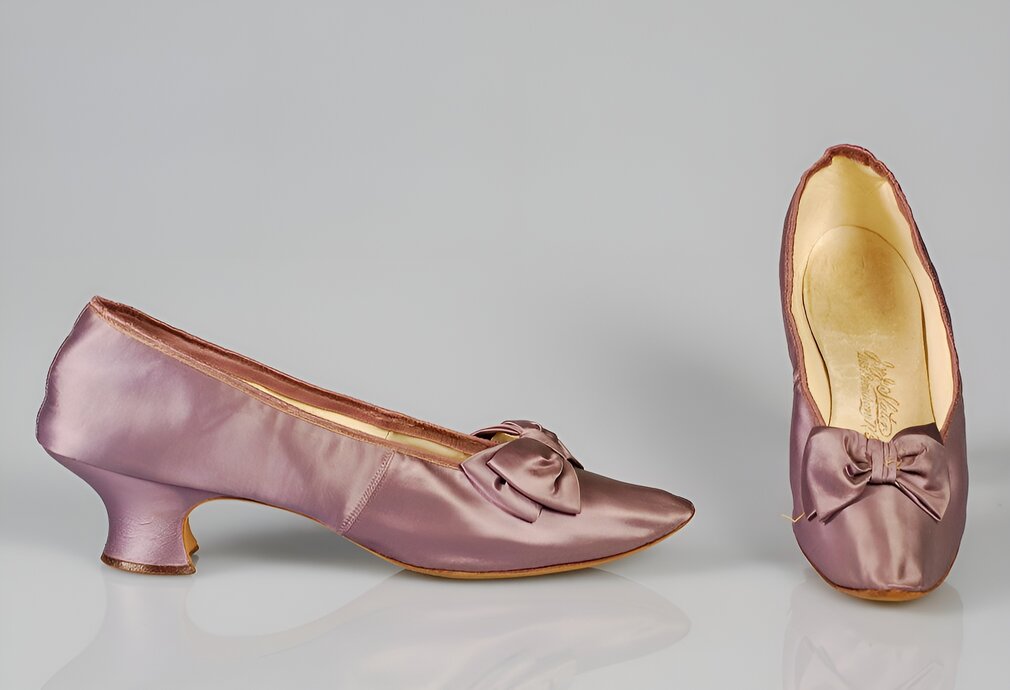
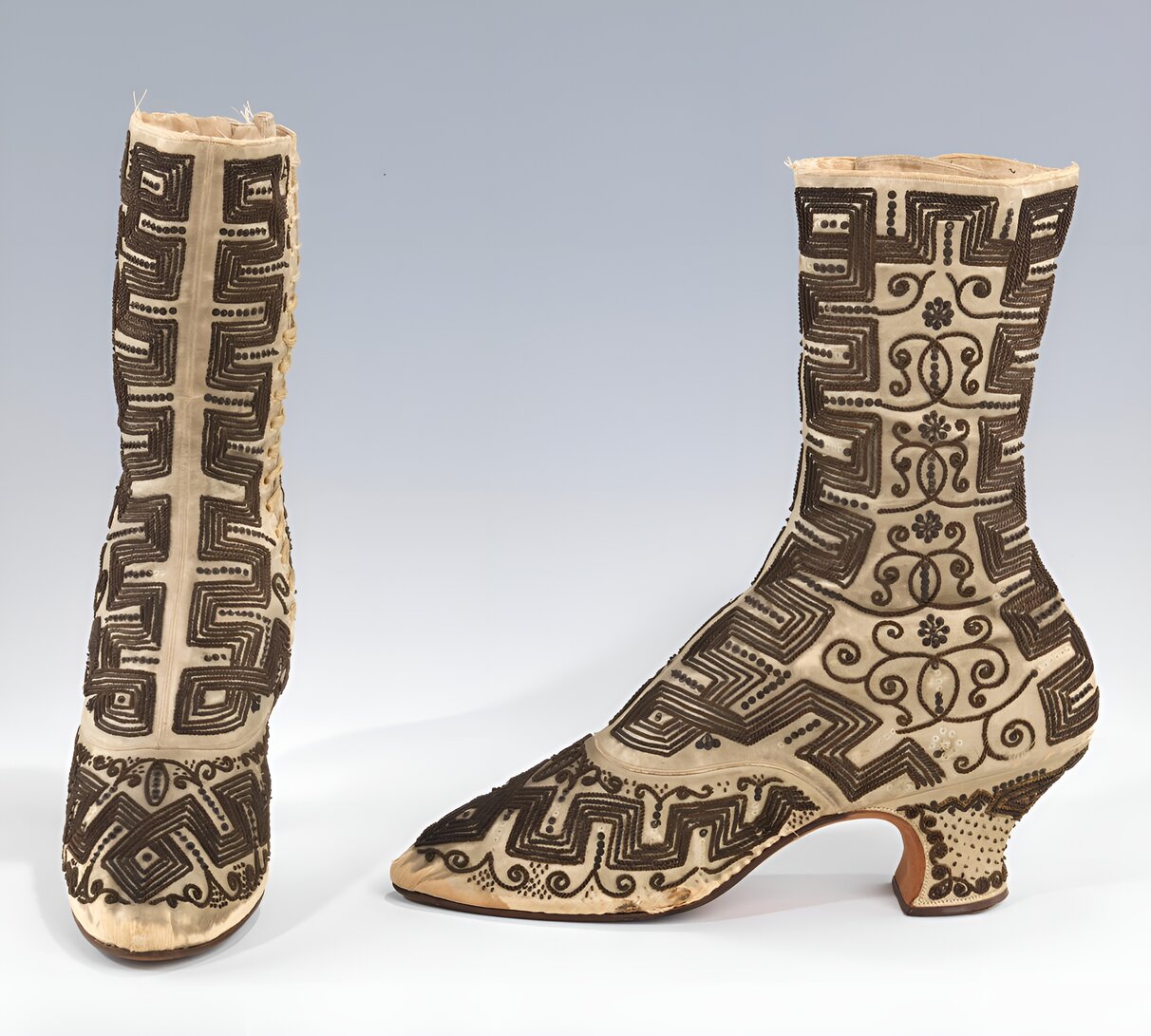


Those of the upper class who were invited to attend the royal courts of Europe would wear something altogether more extravagant and reminiscent of the 18th century.
As the wife of Washington Augustus Roebling, the chief engineer of the Brooklyn Bridge in New York City, Emily Warren Roebling ran the day-to-day supervision of the project for a period of fourteen years after husband became ill.
She wore this gown for her formal presentation to Queen Victoria in 1896.

Presentation at court was a special event for American women of Roebling’s social status and court protocol dictated the attire.
Lavishly embroidered, the sumptuous textiles and long train are characteristics of a formal gown appropriate for the occasion.
Originally intended to be worn at home for afternoon tea with family and friends, by the late 1900s, tea gowns were worn through the evening for dinner and other events.
Although just as elegant as formal wear, tea gowns were worn without corsets or assistance from a maid.
Comfortable and relaxing, they would be harbingers of things to come.
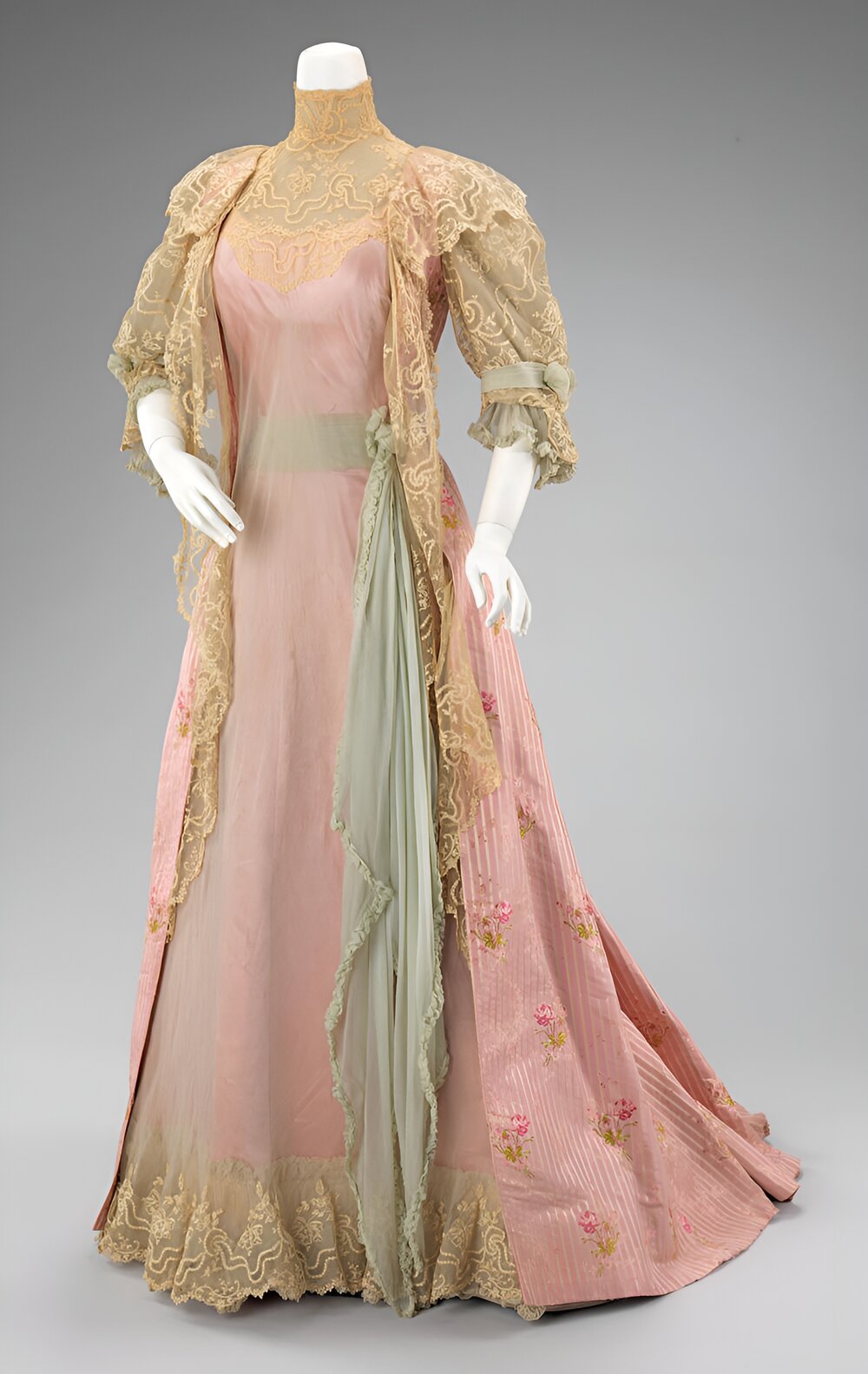
By the close of the Victorian era, women were liberated from tight-laced corsets, restrictive layers of crinolined or bustled fabric, and society’s expectation of a woman’s role.

There was a new woman in town and she was more confident, self-assured, and ready to meet her true potential than ever before.
No longer were women seen as either “fragile” or “voluptuous” as portrayed in earlier decades, but athletic, emancipated, and ready to enter the workforce.
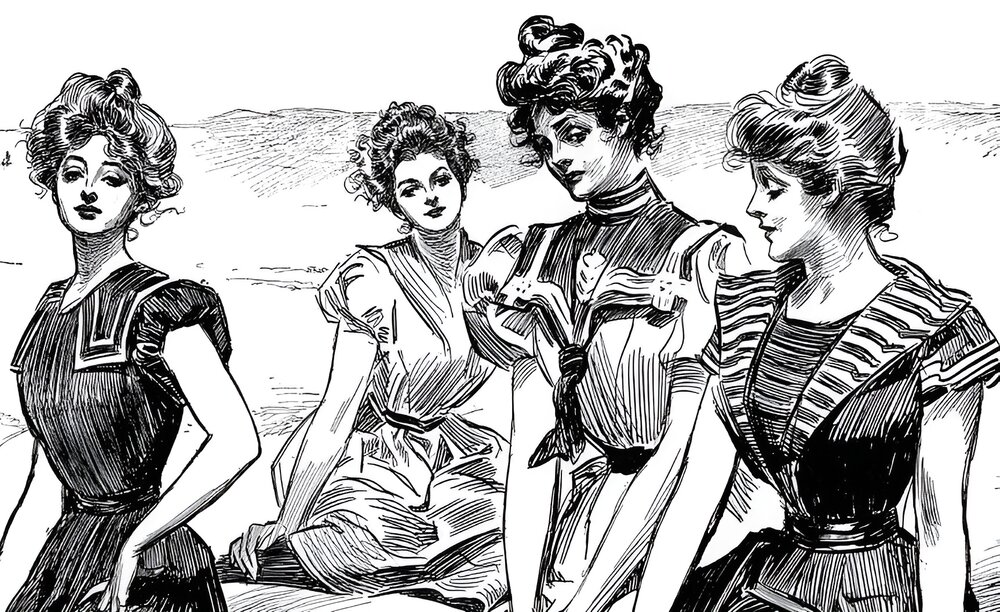
She was the Gibson Girl, and she would fight for the right to vote in the 20th century.
